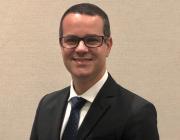Occurrence and predictors of gingivitis and supragingival calculus in a population of Brazilian adults
- Citation:
- Haas, AN, Prado R, Rios FS, Costa R, Angst PDM, Moura MDS, Maltz M, Jardim JJ. 2019. Occurrence and predictors of gingivitis and supragingival calculus in a population of Brazilian adults, May 27. Braz Oral Res. 33:e036.
Abstract:
The aim of this study was to determine the occurrence of gingivitis and calculus and their predictors in a population of adults in Brazil. A representative sample of 758 adults from 35 to 59 years of age from Porto Alegre city was examined. A structured questionnaire was applied. The Gingival Bleeding Index and the presence of calculus were measured at 4 sites/tooth. Multivariable logistic models were fitted to determine the predictors for gingival bleeding at >20% of sites. Overall, 96.5% (95% confidence interval [CI]=95.1-98.0) of individuals had >/= 1 bleeding site. The mean percentages of sites with gingivitis and calculus were 26.1% and 44.6%, respectively. The odds of gingivitis decreased by approximately 45% for individuals >/=40 years old compared to younger adults. Individuals that never performed interproximal cleaning and non-whites had an approximately two times higher chance of gingivitis. Smokers had lower chances of gingivitis than never-smokers (odds ratio=0.40; 95% CI=0.24-0.68). Higher numbers of missing teeth were associated with higher chances of gingivitis. The percentage of calculus was significantly associated with skin color, education, proximal cleaning, smoking exposure, dental visits, and tooth loss. It can be concluded that the occurrence of gingivitis and calculus was high in this Brazilian population, and it was associated with age, skin color, education, self-reported proximal cleaning, smoking, dental care, and tooth loss.
Notes:
Haas, Alex NogueiraPrado, RenanRios, Fernando SilvaCosta, Ricardo Dos Santos AraujoAngst, Patricia Daniela MelchiorsMoura, Mauricio Dos SantosMaltz, MarisaJardim, Juliana JardimengBrazilBraz Oral Res. 2019 May 27;33:e036. doi: 10.1590/1807-3107bor-2019.vol33.0036.
